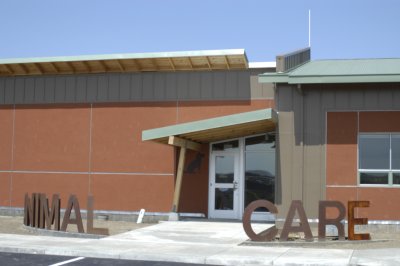- Elizabeth Larson
State, local officials serve search warrant at Fowler property

KELSEYVILLE – On Tuesday state and local authorities served a search warrant at the home of a Kelseyville land owner whose property was ordered abated by the Board of Supervisors in January.
Charles Fowler said he found several investigators on the porch of home on Adobe Creek Road Tuesday morning, including members of the District Attorney's Office accompanied by representatives of state agencies.
In January the board ordered an abatement on Fowler's 360-acre property, citing junker vehicles, outdoor storage, large amounts of greenwaste and unpermitted mobile homes. However, they have allowed him time to do his own cleanup, which has showed marked progress, according to his neighbors.
At the board's April 8 meeting, supervisors voted to give Fowler an additional 30 days to work on cleanup, as Lake County News has reported.
But the Tuesday warrant service was done independently of the board, whose members weren't notified about the search beforehand, according to District 5 Supervisor Rob Brown, in whose district Fowler's property is located.
Brown said neither he nor Board Chair Ed Robey were told the investigation was taking place.
County Code Enforcement Manager Voris Brumfield said the warrant service was done through the District Attorney's Office and wasn't a Code Enforcement operation.
However, two Code Enforcement officers led two teams totaling 25 people – including scientists from the state Department of Toxic Substances Control – to various sites around Fowler's 360-acre property, according to Brumfield.
“They were doing testing of materials as well as investigating the materials that were there,” said Brumfield.
She referred Lake County News to county Environmental Health Director Ray Ruminski for more information about the investigation.
However, Ruminski is out of town at a conference for the rest of the week, according to his staff, and Lake County News was unable to reach him.
Chief Deputy District Attorney Richard Hinchcliff confirmed that the District Attorney's Office was involved but would only say that it was part of an ongoing investigation related to environmental issues.
Also involved, according to county officials, is a state environmental circuit prosecutor who did not return a call from Lake County News seeking comment.
Fowler said the appearance of investigators caught him by surprise.
The warrant, he said, didn't contain specific details about what investigators were searching for, but they took a phone bill, a sheet of ledger paper containing the name of Lakeport Disposal – the company with which Fowler contracted to accept greenwaste on his property – as well as Fowler's personal computer.
The computer, he said, had all of his personal and financial information on it, and investigators wouldn't let him back up the information before taking it.
Fowler, who has spent months recovering from a tumor on his pituitary gland, said the investigators kept him in his house during the search, which lasted several hours. “I wasn't able to observe what they were doing.”
He said he believes they think he's guilty of some “environmental crime,” and suggested this was retaliation for his claims that his rights have been violated.
“If they wanted to come out here and take a soil test or something, they could have called me rather than spending all this money on the warrant,” he said.
Brumfield said Code Enforcement staff noted while at the property Tuesday that Fowler had removed two singlewide mobile homes that the county had wanted removed. Fowler added that he's still in the process of dismantling a third trailer.
Illegally installed mobile homes, open and outdoor storage issues and vehicles were the focus for Code Enforcement, said Brumfield.
She also pointed to concerns about animals on the ranch, although Animal Care and Control Director Denise Johnson said one of her officers attended the warrant service and found the animal issues to be unfounded.
Fowler, whose family has lived on the property for about 122 years, said he's made great strides in cleaning up the land since he came home from the hospital.
He said he always has done composting on the land, and had farm workers living there before – both of which were listed as issues of concern for the county. “All of a sudden I've lost all of my rights.”
The issues on his property, said Fowler, aren't all his doing. He said someone abandoned a travel trailer on his land, but Code Enforcement held him responsible for it rather than helping him find the culprits.
Cleanup also was difficult during the wet, winter months, he said, adding that a plan for cleanup he and his daughter, Sara, submitted was turned down because it didn't have dates specific enough relating to the time frame for cleanup.
When it became public that his land was being abated, he said people started showing up on his property and taking things.
Fowler said he believes his rights have definitely been violated.
Brown said Code Enforcement has scheduled an update on the Fowler case for the May 13 Board of Supervisors meeting.
E-mail Elizabeth Larson at
{mos_sb_discuss:2}








 How to resolve AdBlock issue?
How to resolve AdBlock issue? 



